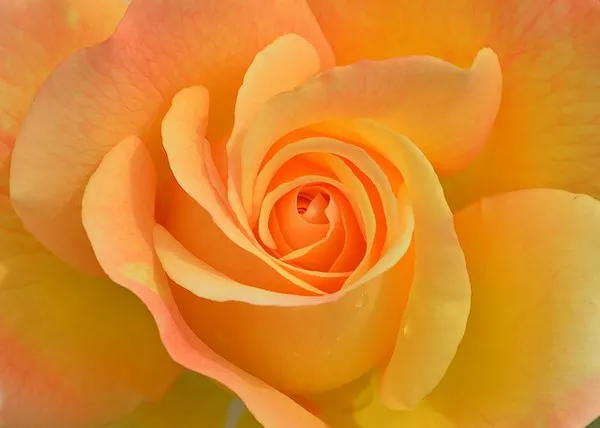Flowers have been used for centuries as a form of non-verbal communication, conveying emotions, sentiments, and messages through their colors, shapes, and scents. Among the myriad hues that flowers adorn, yellow stands out for its bright and cheerful presence. Yellow flowers hold a special place in the realm of symbolism, evoking a range of meanings that go beyond mere aesthetics. In this article, we delve into the captivating world of yellow flowers, exploring their significance across cultures, historical contexts, and modern interpretations.
The Significance of Yellow
Yellow is a color often associated with feelings of happiness, positivity, and warmth. It’s the color of sunshine and optimism, instantly brightening up any environment. In the realm of flowers, the color yellow carries similar connotations. Yellow flowers are often thought to symbolize joy, friendship, and new beginnings. They radiate a sense of energy and vitality, making them a popular choice for various occasions, from birthdays to celebrations of achievements.
Historical and Cultural Context
The symbolism of yellow flowers is deeply rooted in history and culture. In many ancient civilizations, yellow was linked to the sun and its life-giving properties. In Egypt, for instance, yellow flowers were associated with the sun god Ra and were used in religious ceremonies. Similarly, in Chinese culture, yellow represents royalty, prosperity, and power. The chrysanthemum, a yellow flower, holds special significance in Chinese art and literature, often symbolizing longevity and fidelity.
During the Victorian era, a period marked by the use of intricate floral arrangements to convey coded messages, yellow flowers took on nuanced meanings. Yellow tulips, for example, were used to express hopeless love, while yellow roses symbolized friendship and the warmth of a relationship.
Common Yellow Flowers and Their Meanings
Yellow flowers come in various shapes and sizes, each carrying its own unique symbolism. Here are some of the most common yellow flowers and their associated meanings:
1.Yellow Roses: While red roses are the ultimate symbol of romantic love, yellow roses express friendship and the joy of companionship. They are often given to friends or used to brighten someone’s day.
2. Sunflowers: These towering blooms with their large, golden heads are aptly named. Sunflowers symbolize adoration, loyalty, and the strong connection between loved ones. They follow the sun’s path throughout the day, a behavior known as heliotropism, which also represents devotion.
3. Daffodils: Daffodils, with their vibrant yellow petals and trumpet-shaped blooms, signify rebirth and new beginnings. They are often associated with the arrival of spring and are given as a symbol of encouragement or support.
4. Tulips: Yellow tulips convey cheerful thoughts and the idea of a perfect love. They are a great choice to give to someone to brighten their day or to express your admiration for them.
5. Chrysanthemums: Chrysanthemums hold different meanings in various cultures. In Western contexts, they symbolize positivity and happiness. In Asian cultures, particularly in Japan, they represent longevity, happiness, and the sun.
6. Daisies: Yellow daisies embody innocence, purity, and friendship. They are often used in bouquets to express appreciation for a friend’s loyalty or support.
7. Marigolds: Marigolds are often associated with warmth, passion, and creativity. In some cultures, they are used in festivals and celebrations, symbolizing good fortune and positive energy.
Modern Interpretations and Uses
In today’s world, yellow flowers continue to carry their traditional meanings, while also evolving to encompass more contemporary interpretations. Yellow blooms are often used in celebratory contexts, such as birthdays, graduations, and anniversaries. They are a wonderful way to convey feelings of joy, optimism, and the hope for a bright future.
Yellow flowers are also commonly used in wellness and self-care practices. The color yellow is believed to stimulate mental activity, enhance focus, and boost overall mood. Incorporating yellow flowers into spaces like offices and study areas can create an environment conducive to productivity and positivity.
FAQs About Yellow Flowers
1. Are yellow flowers appropriate for expressing romantic love?
Yellow flowers, particularly yellow roses, are not typically associated with romantic love. They symbolize friendship and joy instead. If you’re looking to express romantic feelings, red or pink flowers are more suitable.
2. Can yellow flowers be used in sympathy arrangements?
Yes, yellow flowers can be used in sympathy arrangements. They can symbolize the positive memories and joyful moments shared with the departed, offering comfort to grieving individuals.
3. What flowers pair well with yellow blooms in a bouquet?
Yellow flowers can be beautifully complemented by white blooms for an elegant and serene arrangement. Adding touches of greenery or purple flowers can create a visually appealing contrast.
4. Do yellow flowers have any cultural or religious significance?
Yes, yellow flowers hold cultural and religious significance in various societies. For example, in Hinduism, yellow marigold flowers are often used in religious ceremonies and are considered sacred.
5. Can I give yellow flowers for a professional or formal occasion?
Yellow flowers can be suitable for professional occasions, especially if the atmosphere is relaxed or if you have a friendly relationship with the recipient. However, in very formal or somber settings, it’s advisable to choose more neutral-colored flowers.
In Conclusion
The language of yellow flowers transcends time and borders, offering a universal symbol of joy, friendship, and new beginnings. From their historical roots to modern interpretations, yellow blooms continue to enchant us with their radiant hues and uplifting meanings. Whether gifted as a token of appreciation, used to brighten up spaces, or integrated into cultural and religious practices, yellow flowers serve as a testament to the enduring power of nature’s beauty and its ability to convey heartfelt emotions without saying a word.


